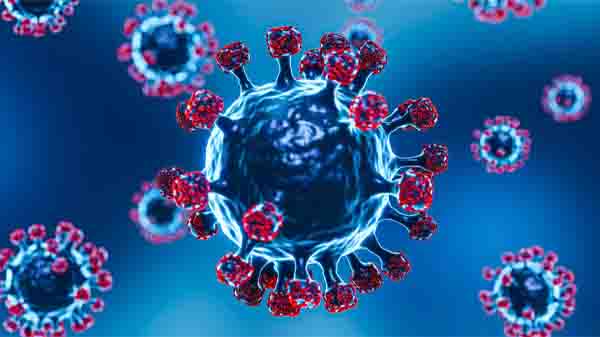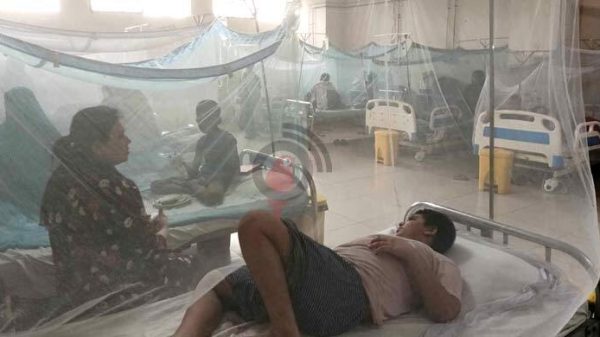JN.1: Symptoms, Prevention of and Precautions for the New COVID-19 Variant

- Update Time : Wednesday, 31 January, 2024, 01:52 pm
- 107 Time View

Online Desk: The past two years have been a rollercoaster ride of uncertainty, and just when the world thought the situation of Coronavirus pandemic was under control, a new variant, JN.1, has surfaced. This article aims to dissect the symptoms, causes, and implications of JN.1, the new strain of COVID-19.
What is JN.1? How Does It Affect People?
JN.1, an Omicron subvariant, surfaced in September last year amid declining temperatures, showing heightened transmission rates. Stemming from BA.2.86 (also known as Pirola), JN.1 possesses an additional spike protein mutation crucial for SARS-CoV-2 cell interaction.
The World Health Organization (WHO) categorises JN.1 as a Variant of Interest (VOI), distinct from its precursor BA.2.86, due to its rapid spread. Recently identified in the United States, close monitoring is essential to comprehend and address the dynamics of this evolving COVID-19 variant.
The rise in JN.1 cases aligns with a general surge in COVID-19 infections. Symptoms of JN.1 infection closely resemble those of earlier Omicron variants, with no apparent increase in severity. While there are hints of potential increased diarrhoea cases, concrete data supporting this observation is currently lacking. Continuous monitoring is essential to better understand the characteristics of this variant.
Is JN.1 More Transmissible?
JN.1, a descendant in the Omicron lineage, appears to be more transmissible than its precursor, BA.2.86. The observed surge in case numbers indicates increased transmissibility. Several newer variants, including JN.1, exhibit mutations affecting the spike protein’s binding strength to respiratory cells, potentially enhancing replication and immune evasion.
While it remains early to precisely gauge JN.1’s transmissibility and immune escape compared to other Omicron variants, experts assert its notable virulence. Dr. Joseph Khabbaza from the Cleveland Clinic notes that the current strain seems to deliver a more potent impact than its predecessors.
Who is at High Risk of Infection?
Certain groups face a higher risk of contracting the easily transmissible virus. These include:
– People aged 65 and above
– Diabetic people
– People with neurological disorders
– People who have pre-existing health conditions like COPD, heart diseases, chronic kidney diseases, cystic fibrosis, and individuals suffering from liver ailments
– Pregnant women
– Smokers
– People with a compromised or weak immune system
– Healthcare workers
– People who are not vaccinated or have not taken booster shots.
What are the Symptoms and Causes of the JN.1 COVID-19 Variant?
JN.1’s increasing prevalence implies heightened contagiousness or improved evasion of immune defences, as per the CDC. Currently, there is no evidence indicating it induces more severe disease than other strains, despite potential transmission spikes. Symptoms associated with JN.1 seem comparable to those induced by other strains, encompassing a range such as
– Sore throat
– Congestion
– Runny nose
– Cough
– Fatigue
– Headache
– Muscle aches
– Fever or chills
– Loss of sense of taste or smell
– Shortness of breath or difficulty breathing
– Nausea or vomiting
– Diarrhoea
The nature and intensity of symptoms typically rely more on an individual’s overall health and immune condition rather than the specific variant causing the infection.
Lifestyle Choices that are Risk Factors for JN.1 COVID-19 Variant
Certain lifestyle choices can increase the risk of contracting JN.1. The primary risk factor for the JN.1 COVID-19 variant is remaining unvaccinated. Additionally, close contact with infected individuals, frequent crowded indoor spaces, and inadequate mask-wearing practices significantly elevate the risk of contracting the variant. Emphasising vaccination and adopting safer lifestyle choices can mitigate these risks.
JN.1 COVID-19 Variant Health Risks
On December 19, the World Health Organization (WHO) classified the JN.1 coronavirus strain as a “variant of interest,” noting its ability to evade the immune system and increased transmissibility. However, experts, including virologist Andrew Pekosz, suggest that despite the potential for more cases, JN.1 does not present a greater risk of severe disease.
Current evidence indicates a low public health risk from the strain. WHO assures that existing vaccines remain effective against severe outcomes from JN.1 and other circulating COVID-19 variants.
Prevention and Precautions for JN.1 Variant
The key strategy to safeguard against severe outcomes from COVID-19, including the JN.1 variant, are
– Getting vaccinated and boosted
– Consulting healthcare provider for personalised advice on vaccination
– Utilising well-fitting masks, particularly N95s or KN95s, in crowded indoor settings to reduce transmission risk.
– Practise social distancing, maintaining at least 6 feet from others, especially outside your household.
– Prioritise hand hygiene by washing hands thoroughly and using alcohol-based sanitizers.
– Adopting a nutrient-dense diet, taking supplements, and adhering to recommended preventive measures collectively contribute to reducing the risk of infection and severe illness.
Impact of JN.1 Variant
Global Impact
As of the latest update, JN.1, the emerging sub-variant of Omicron, has been detected in numerous countries worldwide, including India, China, the UK, and the United States. The World Health Organization (WHO) asserts that the current risk to the public remains low, with existing vaccines continuing to provide protection.
However, there is a cautionary note about the potential for increased COVID-19 and other respiratory infections during the winter. In the United States, JN.1 is currently the fastest-growing variant, comprising 15-29% of infections, according to the US Centres for Disease Control and Prevention.
In the UK, JN.1 accounts for around 7% of positive Covid tests, with ongoing monitoring by health authorities. Although there are no reported instances of increased severity with JN.1, further studies are needed to comprehensively understand its health impact, particularly as data on hospital admissions for COVID-19 becomes more limited globally.
Bangladesh Impact
As of January 13, 2024, Professor Tahmina Shirin, director of the Institute of Epidemiology Disease Control and Research (IEDCR) in Bangladesh, reported the presence of the JN.1 sub-variant in test samples from five COVID-19 patients. Notably, these cases spanned both Dhaka and other regions in the country.
Verdict
JN.1 is a formidable opponent in the ongoing battle against the COVID-19 pandemic. Understanding its symptoms, causes, and implications is crucial for developing effective strategies for containment and mitigation. As we navigate this evolving landscape, alertness, vaccination, strong immunity, and collective action remain our best weapons.
















